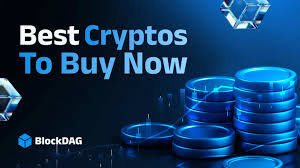BlockDAG Network: The Future of Decentralized Ledger TechnologyIntroduction
In the rapidly evolving world of blockchain technology, scalability, security, and decentralization remain critical challenges. Traditional blockchain networks, such as Bitcoin and Ethereum, rely on linear block structures, which often lead to bottlenecks in transaction processing speeds and high fees during peak usage. To address these limitations, a new paradigm has emerged—BlockDAG (Directed Acyclic Graph) networks.
BlockDAG networks represent a significant advancement in distributed ledger technology by allowing blocks to be added in parallel rather than in a single chain. This structure enhances scalability, reduces confirmation times, and improves overall network efficiency. In this article, we will explore the fundamentals of BlockDAG, its advantages over traditional blockchains, key implementations, and its potential to revolutionize decentralized systems.
What is BlockDAG?
A BlockDAG (Directed Acyclic Graph) is a data structure that extends the traditional blockchain model by allowing multiple blocks to reference multiple predecessors rather than forming a single linear chain. Unlike a blockchain, where each block points only to one previous block, a BlockDAG enables a more flexible and scalable approach to transaction validation.
Key Characteristics of BlockDAG:
Directed – Blocks are linked in a specific direction (from newer to older blocks).
Acyclic – No block can reference itself or create loops.
Graph Structure – Multiple blocks can coexist and reference multiple parent blocks.
This structure allows for parallel block processing, significantly increasing throughput compared to linear blockchains.
How BlockDAG Works
1. Block Creation & Referencing
In a BlockDAG network, miners or validators can create blocks that reference multiple previous blocks rather than just one. This means transactions can be confirmed faster since multiple blocks can be added simultaneously without strict sequential ordering.
2. Consensus Mechanisms
BlockDAG networks use modified versions of traditional consensus algorithms, such as:
Proof-of-Work (PoW) DAG – Used by networks like Kaspa, where miners still compete to solve cryptographic puzzles, but blocks are added in parallel.
Proof-of-Stake (PoS) DAG – Some newer BlockDAG implementations explore PoS for energy efficiency.
GhostDAG – A variant that ensures fairness and security by selecting the "heaviest" sub-DAG (most referenced blocks).
3. Transaction Finality
Unlike blockchain, where transactions require multiple confirmations in a single chain, BlockDAG achieves finality by ensuring that a transaction is included in multiple blocks across the DAG. The more references a block has, the more secure and immutable it becomes.
Advantages of BlockDAG Over Traditional Blockchain
1. Scalability
Higher Throughput: Since multiple blocks can be added in parallel, BlockDAG networks can process thousands of transactions per second (TPS), far exceeding Bitcoin (7 TPS) and Ethereum (15-30 TPS).
No Bottlenecks: Linear blockchains suffer from congestion when too many transactions compete for block space. BlockDAG eliminates this by allowing parallel processing.
2. Faster Confirmations
Transactions are confirmed as soon as they are included in a block and referenced by subsequent blocks, reducing wait times significantly.
3. Enhanced Security
The DAG structure makes it harder for attackers to reorganize the chain (51% attacks) because altering one block requires modifying multiple referenced blocks.
4. Lower Fees
With higher throughput, transaction fees remain low even during high network activity.
5. Decentralization
BlockDAG does not rely on a single chain, reducing the risk of centralization in mining or validation.
BlockDAG vs. Blockchain: A Comparative Analysis
Feature Blockchain (BTC, ETH) BlockDAG (Kaspa, Nano)
Structure Linear chain of blocks Directed Acyclic Graph
Scalability Limited (7-30 TPS) High (1000+ TPS)
Confirmation Time Slow (10+ mins for BTC) Fast (seconds)
Security Model PoW/PoS (sequential) PoW/PoS (parallel)
Transaction Fees High during congestion Consistently low
Use Cases Store of value, DeFi High-speed payments, IoT
Notable BlockDAG Implementations
1. Kaspa (KAS)
One of the most prominent BlockDAG implementations.
Uses GhostDAG protocol for fair block selection.
Achieves 1 block per second (BPS) with plans for 10-100 BPS.
2. Nano (XNO)
Uses a Block Lattice structure (a type of DAG).
Enables feeless, instant transactions.
Ideal for micropayments and everyday transactions.
3. Fantom (FTM)
Implements Lachesis Protocol, a DAG-based consensus.
Supports smart contracts and DeFi applications.
4. IOTA (MIOTA)
Designed for IoT (Internet of Things) with a Tangle (DAG-based ledger).
Zero-fee transactions and machine-to-machine payments.
Challenges and Limitations of BlockDAG
Despite its advantages, BlockDAG technology is still evolving and faces several challenges:
1. Complexity in Consensus
Ensuring security in a parallel block environment requires sophisticated algorithms.
Some BlockDAG networks may face trade-offs between decentralization and speed.
2. Adoption Barriers
Many developers and enterprises are accustomed to traditional blockchains.
Interoperability with existing blockchain systems can be challenging.
3. Storage Requirements
Storing a DAG structure may require more disk space than a linear blockchain.
4. Maturity of Projects
Most BlockDAG projects are still in early stages compared to Bitcoin and Ethereum.
Future of BlockDAG Networks
BlockDAG technology has the potential to redefine decentralized networks by offering:
Instant Payments: Ideal for retail and cross-border transactions.
Enterprise Solutions: High-throughput networks for supply chain and IoT.
DeFi & Smart Contracts: Faster and cheaper execution than Ethereum.
As research and development continue, we may see hybrid models combining the best of blockchain and DAG structures.
Conclusion
BlockDAG networks represent a revolutionary step forward in distributed ledger technology, addressing the scalability and speed limitations of traditional blockchains. With projects like Kaspa, Nano, and Fantom leading the way, BlockDAG is poised to play a crucial role in the future of decentralized finance, IoT, and high-speed transactions. While challenges remain, the potential for near-instant, low-cost, and scalable transactions makes BlockDAG a compelling alternative to conventional blockchain systems.
As the technology matures, we can expect broader adoption and innovative use cases that leverage the power of parallel block processing. The evolution from blockchain to BlockDAG may well be the next major leap in the world of decentralized networks.

